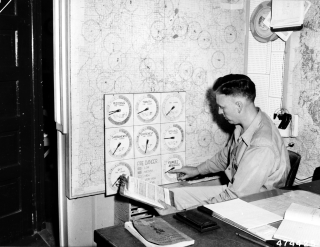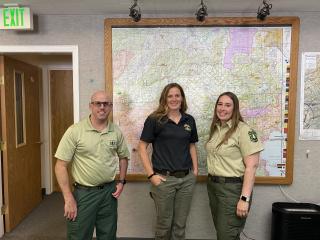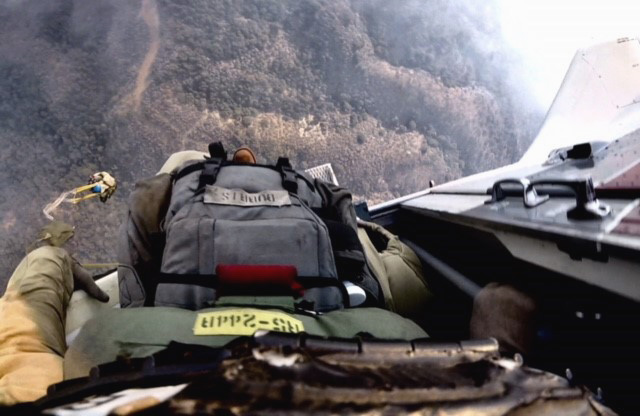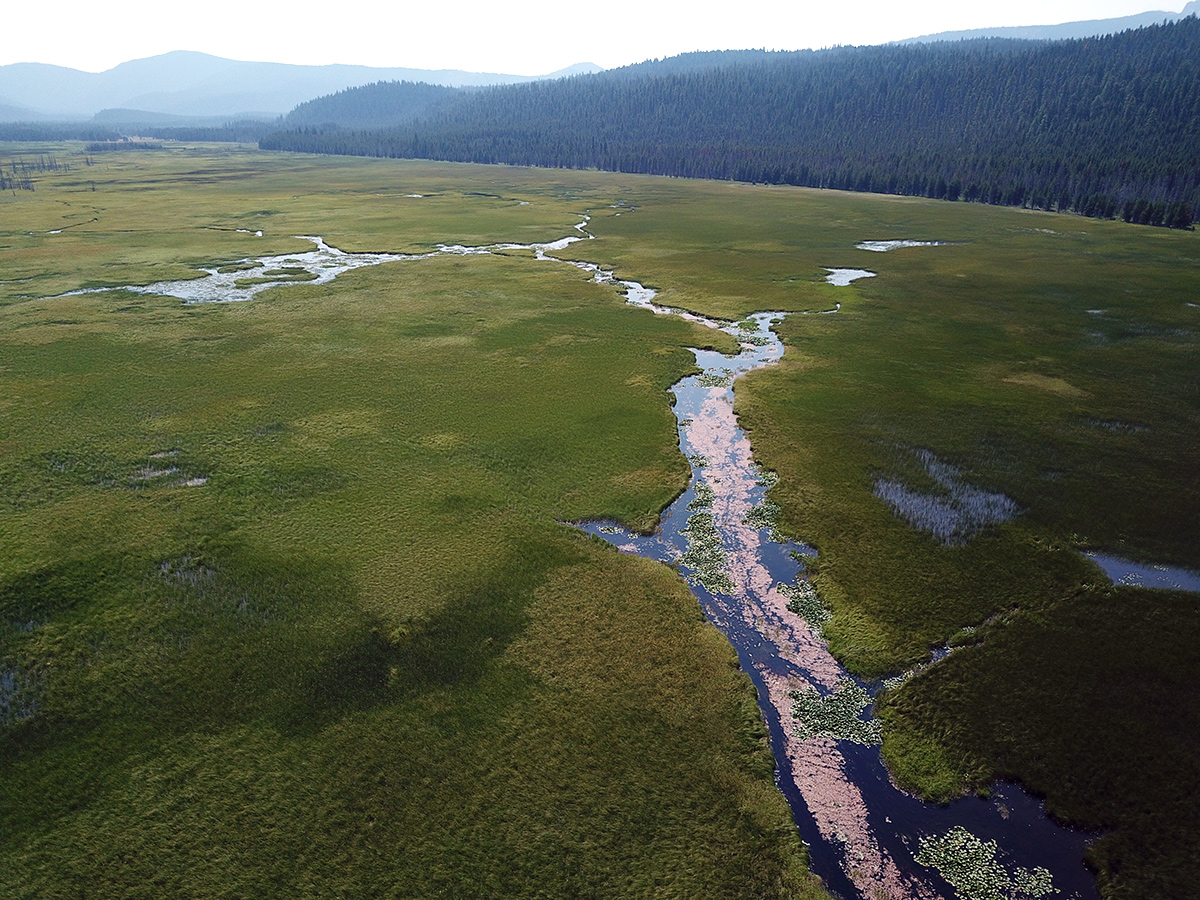
As wildfires burn across the American west, firefighters from Maine to California respond to the call. But who initiates the call? Behind every engine, helicopter, fixed wing aircraft and firefighter stands a team of dispatchers.
For the uninitiated, walking into a USDA Forest Service and CALFIRE Interagency Command Center has a sense of the cinematic. Large screens, maps, and the squelch of radios abound in an audio-visual surround sound. The quiet energy is bolstered by the background of constant incoming and outgoing messages.

The Tahoe National Forest dispatch team have put harmony into what could easily be a cacophony of information. Teams like these, located in over 100 dispatch centers around the country, are responsible for getting people and resources on wildfires across the 50 states.
Trevor Thurber is a Forest Service dispatcher with the Tahoe-based team. He was drawn to work in dispatch through a dual affinity.
“I enjoy the fast-paced environment and the opportunity to help both the public and our public lands,” said Thurber.
Dispatchers like Thurber express a humble sense of the importance of the work they do. Despite being far outside of the spotlight, dispatchers play an indispensable role.

Their job begins as soon as an initial report of a wildfire from fire lookout tower or 911 call comes in. Ever wonder how fires get their names? That is dispatch – they often choose a geographical feature or road nearby by which to identify the fire. They also determine what resources – staff, engines, aircraft, and more – need to be sent based on the fire’s location and intensity. They work as a team and divide duties: communication with the incident commander, orders for ground resources, and orders for aircraft. They keep track of those resources and log updates about the fire in computer-aided dispatch systems. This work often requires dispatchers to staff centers 24 hours a day to support the needs of the agency’s fire response.
A dispatcher’s realm extends well beyond wildfires. Year-round they assist Forest Service law enforcement and track the status and location of employees working in the field. When not in the thick of fire season, they work with avalanche forecasters, aid partnering agencies with medical emergencies or vehicle accidents, and send resources to assist emergencies in other parts of the country.

Their work requires a mastery of several forms of technology. To name a few: computer-aided dispatch systems, which record the status of available and assigned resources; remote fire cameras, which operate as virtual fire towers; and an automated flight following system, which tracks the status of aircraft.
There are a variety of pathways into working in dispatch for the Forest Service. As a Geographic Information System intern on the Tahoe National Forest, Kristen Furie developed a fascination with the use of mapping in emergency services. When her internship concluded, she looked for an opportunity to continue working with fire and mapping and found it in dispatch.
“I love supporting folks in the field and the ability to assist on large fires across the country, taking assignments from coast to coast,” Furie said. “You can never predict what the day will bring. There is always something new and challenging.”






